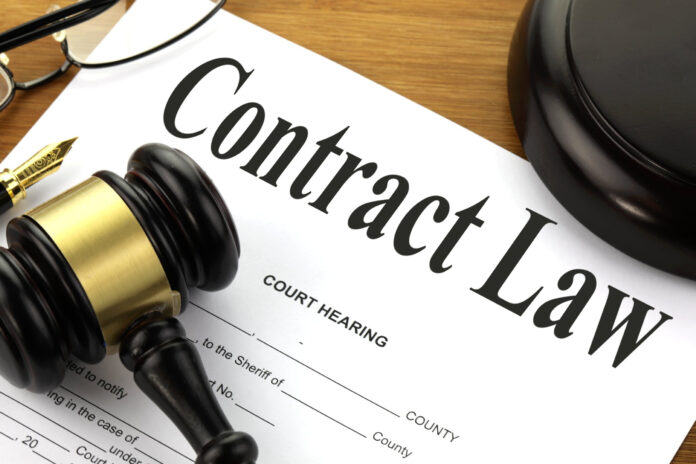This article has been written by Oishika Banerji of Amity Law School, Kolkata. This article provides a detailed discussion of the Hold Harmless Agreement which gives business owners defence against lawsuits when a customer or employee sustains harm, a physical injury or financial loss on company property or while receiving a service.
It has been published by Rachit Garg.
Introduction
A “Hold Harmless Agreement,” also known as an indemnification agreement or indemnity provision, is a clause in a contract that states that one or both parties will not hold the other party liable for losses incurred as a result of conducting business. Hold harmless agreements can be unilateral (one party waives their right to sue and the other is shielded from action) or reciprocal (both parties are protected from each other being sued or both parties waive their right to sue the opposite party, and both parties are protected from lawsuits). In more risky industries like construction, event organising, hospitality, and outdoor leisure, these agreements are more prevalent. However, there are many situations in which startups and small businesses would profit from the security of a hold harmless agreement. This article discusses the concept of the Hold Harmless Agreement in detail.
What is a hold harmless agreement
By forcing the persons with whom you are doing business to refrain from suing you in specific situations, a Hold Harmless Agreement, also known as an indemnity agreement, shields your company from lawsuits. It’s a release of liability that will shield you from legal action from a business partner who sustains a personal injury. For illustration, a general contractor might stipulate this in all contracts with subcontractors for work on a project. Hold harmless agreements are common in the building, real estate, and service sectors, particularly in businesses that engage in high-risk operations. Even if you are not in certain areas, hold-harmless clauses in contracts may be beneficial to reduce your liability exposures.
A hold harmless clause may not always shield a party from liabilities or legal action. Some states will not uphold, hold harmless contracts, with vague language or an excessively broad reach. Additionally, if signers make a convincing argument that they were forced or duped into signing a hold harmless clause, the clause can be ruled void.
Hold harmless agreement insurance is most useful for high-risk businesses like construction and real estate. Their staff is frequently working on someone else’s property, where accidents or damages could happen. For instance:
- You might be required to sign a hold harmless agreement if a construction company or independent contractor is working on the premises of your business in order to prevent being held accountable for any accidents caused by the construction work.
- In order to prevent the client from suing the real estate agent’s business in the event of an injury sustained during a home tour, the real estate agent’s company may request a hold harmless agreement before the customer meets with them to view a property.
Are all hold harmless agreements enforceable
Simply put, all hold harmless agreements are not enforceable. 39 states have laws against indemnification that forbid one or more hold harmless agreements. Some of these rules are industry-specific, while others have different requirements depending on whether a contract is private or public. Never consent to a hold harmless agreement without first having a lawyer confirm that it is lawful to do so. The 39 states that forbid hold harmless agreements its broad form is:
- Alaska
- Arizona (prohibit both broad and moderate form indemnity agreements)
- Arkansas
- California (prohibit both broad and moderate form indemnity agreements)
- Colorado (prohibit both broad and moderate form indemnity agreements)
- Connecticut (prohibit both broad and moderate form indemnity agreements)
- Delaware (prohibit both broad and moderate form indemnity agreements)
- Georgia
- Hawaii
- Idaho
- Illinois (prohibit both broad and moderate form indemnity agreements)
- Indiana
- Iowa (prohibit both broad and moderate form indemnity agreements)
- Kansas (prohibit both broad and moderate form indemnity agreements)
- Kentucky (prohibit both broad and moderate form indemnity agreements)
- Louisiana (prohibit both broad and moderate form indemnity agreements)
- Massachusetts (prohibit both broad and moderate form indemnity agreements)
- Maryland
- Michigan
- Mississippi (prohibit both broad and moderate form indemnity agreements)
- Missouri (prohibit both broad and moderate form indemnity agreements)
- Montana (prohibit both broad and moderate form indemnity agreements)
- Nebraska (prohibit both broad and moderate form indemnity agreements)
- New Hampshire (prohibit both broad and moderate form indemnity agreements)
- New Jersey
- New Mexico (prohibit both broad and moderate form indemnity agreements)
- New York (prohibit both broad and moderate form indemnity agreements)
- North Carolina (prohibit both broad and moderate form indemnity agreements)
- Ohio (prohibit both broad and moderate form indemnity agreements)
- Oklahoma (prohibit both broad and moderate form indemnity agreements)
- Oregon
- Rhode Island (prohibit both broad and moderate form indemnity agreements)
- South Carolina
- South Dakota
- Tennessee
- Utah (prohibit both broad and moderate form indemnity agreements)
- Virginia
- Washington (prohibit both broad and moderate form indemnity agreements)
- West Virginia
How a hold harmless clause/agreement works
A hold harmless clause is frequently used by companies that provide high-risk activities like skydiving lessons. Although it does not provide complete liability protection, it does show that the customer has understood and accepted certain risks. This hold harmless provision could be written in a letter. The hold harmless provision may be exclusive or inclusive. A unilateral provision releases one party from responsibility for any harm or loss sustained by the other party. A reciprocal provision commits both contracting parties to protecting one another from liability.
In many instances that are less evident than a contract for skydiving lessons, the hold harmless provision is used. A hold harmless clause in an apartment lease may state that the landlord is not liable for any damages the renter may cause. When employing a roofer, a homeowner may ask for a hold harmless clause to shield them from legal action if the roofer falls off the roof. In order to shield its members from legal action in the event that they sustain injuries while competing in tennis matches, a sports club may insert a hold harmless clause in its membership agreement. In this case, the hold harmless provision can stipulate that the person must consent to all risks related to the activity, including the possibility of dying.
In order to shield their companies from potential liabilities resulting from their labour, contractors frequently include hold harmless clauses in their contracts. For instance, a contractor hired to build a deck on a private property might include a condition that forbids legal action in the event that someone gets hurt while using the deck in the future. To avoid a lawsuit in the event that the contractor gets hurt while working, the homeowner can include the language of a hold harmless clause to the contract. The first scenario mentioned above is an example of a one-sided hold harmless provision. The only party asking to be held harmless is the contractor. A reciprocal clause is demonstrated in the second example, where the homeowner is also asking the contractor to provide indemnity.
Advantages and disadvantages of a hold harmless agreement
A hold harmless agreement protects you from the detrimental effects of commercial lawsuits as a form of risk management. Purchasing one might be advantageous for your company because it could help with:
- Reducing your chance of being sued: Businesses who have hold-harmless agreements experience fewer lawsuits.
- Lowering your legal costs: Hold harmless agreements allow businesses to avoid frequent legal representation because they are used less frequently. This can help you save a tonne of money given the normal attorney’s costs in today’s society.
- Lowering your anxiety and stress: Running a business is difficult enough without having to worry about lawsuits from your suppliers and clients. Because a hold harmless agreement provides indemnification, you may concentrate on your work without worrying about the possibility of being sued.
- Reducing the risk to your reputation: Your reputation could suffer greatly if a business lawsuit in which you are engaged is in the news. By signing a hold harmless agreement, you can stay out of the spotlight.
There may be various disadvantages to holding a party harmless for injuries or property damage. For instance:
- Too general or ambiguous hold-harmless agreements are not recognised by all nations.
- If the signers feel they were coerced or deceived into the hold harmless agreement, certain forms of hold harmless agreements may be voidable.
- Being deemed harmless does not necessarily shield your company from legal action. Get legal counsel from a lawyer on any unforeseen hazards.
Types of hold harmless agreements
Three basic categories can be used to classify hold harmless agreements:
- General: The protected party is shielded from legal litigation resulting from a specific activity by general hold harmless agreements. Legal protection has a limited scope. For instance, it might only apply to attendance at a particular event sponsored by the business.
- Services: Guards against liabilities that arise while a specific service is being rendered. For instance, a construction worker undertakes to indemnify the general contractor who hired him.
- Property use: Protects property owners, including homeowners and small companies, from claims brought by a third party who is renting or utilising their property.
In the building sector, the three primary types of hold harmless agreements are as follows:
- Limited: Liabilities incurred by the subcontractor are restricted, that is, they are only held accountable for their proportionate share in the accident or negligence.
- Intermediate: The subcontractor is held accountable for all liabilities but is not liable for mistakes or carelessness on the part of the general contractor. This is the type of hold harmless agreement that is most frequently used in the construction sector.
- Broad: Broadly speaking, the subcontractor is liable for all obligations, including the general contractor’s negligence and mishaps.
When is a hold harmless agreement used by businesses
Consider requiring everybody who uses your property, participates in an event you are supporting, or works for you to sign a hold harmless agreement.
- If someone is wounded or property is damaged while on your property for rent or lease, you don’t want to be held accountable in court.
- If you hire a contractor or other service provider to perform on your property and you don’t want to be responsible if they get hurt while doing the assignment.
- When sponsoring a sport with significant physical dangers, like skydiving, you don’t want to be held accountable if someone is hurt.
- Planning a joint business venture but don’t want to take on the legal risk.
- A covenant is a pledge made in writing between two parties. If you make adjustments, you can protect yourself from future legal issues.
Hiring or working as a contractor
When you collaborate on a project with another business, a hold harmless agreement could be helpful. Whether or not you require a hold harmless agreement will depend on how detrimental an error or delay might be. As an illustration, a small firm might employ a videographer to produce a local television ad, but soon after, the designer’s equipment is taken, causing the commercial’s completion to be delayed. It’s unlikely that this delay will have an expensive effect on the small firm.
An equipment robbery might have prevented the Super Bowl commercial from being finished in time to run on game day, though, if that cameraman had been working on one. It is far more urgent to determine who is responsible for such expenses because the client most certainly paid several million dollars for that advertising space. A hold harmless agreement negotiated in advance will aid in determining who is at fault.
Leasing a property
Your business owner’s insurance will cover incidents like slip-and-falls or property damage if you run a business out of a rented space. However, if the damage was caused by the property owner’s carelessness, for example, if poor upkeep caused an electrical fire or a break-in happened after the owner put off changing a lock, then the losses should be paid by the owner’s insurance.
Hold harmless clauses safeguard the owner as well as every other party to the lease. Liability can be challenging, especially in buildings with numerous units. Let’s imagine, for illustration purposes, that an employee left a faucet running over the weekend, causing an office in a building with four units to flood. However, it’s unclear which employee is in charge because the restroom is in a hallway that is shared by two businesses. Further complicating matters, it comes out that this past weekend, the building’s scheduled saturday maintenance inspection was skipped without the owner’s knowledge.
Hold harmless clauses should have been part of each tenant’s lease and the agreement between the building owner and the maintenance firm in a situation this complicated. This will safeguard all parties and guarantee that the proper party or parties are held accountable for the proper share of the losses.
Hosting an event
There is a significant degree of danger involved with special events like conferences or banquets. On the day of the event, a minor vendor mistake could leave you stranded without something essential like food. The hazards associated with leasing a property apply to the specifics of your event if you are renting the event venue.
Most significantly, if problems arise during an event, they might not necessarily be covered by general liability insurance, such as personal injuries or unintentional property damage. You can buy special event insurance in tiny amounts so that you only pay for coverage on the days of the event.
Attendees should sign liability releases when events include risky activities, such as a work retreat or an adventurous activity. Many states find these waivers to be too broad to be enforceable, but liability waivers can still be effective there if they are correctly written and the conditions are clear.
Is the hold harmless agreement binding
Hold harmless agreements are typically enforceable and legally binding. Business owners should provide in their contract explicit language that releases them from liability for litigation brought about by negligence. However, if hold harmless agreements were made only with the company owner, a client could nonetheless pursue legal culpability from a third party.
Releases, waivers, and hold harmless agreements
The terms “release,” “keep harmless,” and “waiver of responsibility” are frequently used interchangeably with regard to hold harmless agreements. All three used terminology that is similar and has the same goal of shielding you from liability to a third party. Hold-harmless provisions are drafted into some contracts to safeguard one or both parties. The other party may state in hold harmless agreements or provisions that they are “releasing, indemnifying, and keeping you harmless” or that “you’re absolving the other party of any liability to them”. Occasionally, the phrases “waive and defend ” are also included in these phrases, but liability protection is the main objective. Every time you sign a contract to use a golf course or a spa, you’re promising not to sue the establishment for damages if you get hurt.
The validity of hold harmless agreements
Holding harmless contracts are frequently lawful, but their legality also depends on your state’s laws, the kind of business they are protecting, and its content. Hold harmless agreements and related provisions are not recognised by all governments, and certain courts have restrictions. Courts frequently support hold harmless agreements in circumstances where some jobs are inherently dangerous, such as construction work.
Similar to hold harmless agreements, some hold harmless terms are unenforceable because they go against the general welfare. A hold harmless clause might be present in a contract for the purchase of airline tickets, for instance, the validity of this clause, which bars your family from suing the airline in the event of an accident, is up for debate among the courts. A court is unlikely to uphold a hold harmless provision if it conflicts with the public interest.
Hold harmless contracts are typically useless if the other party was careless. If it is stated in hold harmless agreements and the other party voluntarily agrees to it, then it is one of the few occasions where a business can release itself from liability for its own negligence. Even then, the arrangement may not be upheld by a court due to how heavily it benefits the business.
Format/sample of a hold harmless agreement
More and more clients in today’s time are requesting, or even demanding, that you sign a hold-harmless contract in order to keep a working relationship alive. Keep in mind that when you sign, you take on someone else’s liability, even though it could be necessary to acquire or keep a client. Do not misunderstand the same as this affects your company. A format of a hold harmless clause has been provided below.
“To the fullest extent permitted by law, the vendor agrees to defend, indemnify, and hold harmless the entity, its elected and appointed officials, employees and volunteers and others working on behalf of the entity against any and all claims, demands, suits or loss, including all costs connected therewith, and for any damages which may be asserted, claimed or recovered against or from the entity, its elected and appointed officials, employees, volunteers or others working on behalf of the entity, by reason of personal injury, including bodily injury or death and/or property damage, including loss of use thereof, which arises out of or is in any way connected or associated with this contract.”
The sample format of a hold harmless agreement has been provided hereunder. The clauses in the agreement have been discussed in the heading below.
Hold Harmless Agreement
This HOLD HARMLESS AGREEMENT (this “Agreement”) is made effective on [insert date] by and between [insert name of who will be protected from liability] of [insert address here], and [insert name of who will provide protection from liability], of [insert address here]. Both are sometimes individually referred to as “Party” and collectively referred to as the “Parties.”‘
WHEREAS, [insert name] desires to hold harmless [insert name] from any claims and/or litigation arising out of [insert name of who will provide protection from liability]’s actions in connection with [describe the transaction that will be performed].
NOW, THEREFORE, in consideration of the mutual covenants and conditions contained herein, both hereby agree as follows:
TERMS
- Hold Harmless
- Authority to Enter Agreement
- Amendment; Modification
- Waiver
- Attorneys’ Fees and Costs.
- Entire Agreement.
- Enforceability, Severability, and Reformation
- Applicable Law
- Exclusive Venue and Jurisdiction
- Signatures.
By: ___________________________________ Date: __________________
[insert name]
By: ___________________________________ Date: __________________
[insert name].
Clauses in a hold harmless agreement
Hold harmless
[insert name] shall fully defend, indemnify, and hold harmless [insert name] from any and all claims, lawsuits, demands, causes of action, liability, loss, damage and/or injury, of any kind whatsoever ( including without limitation all claims for monetary loss, property damage, equitable relief, personal injury and/or wrongful death), whether brought by an individual or other entity, or imposed by a court of law or by administrative action of any federal, state, or local governmental body or agency, arising out of, in any way whatsoever, any acts, omissions, negligence, or willful misconduct on the part of [insert name] by [insert name], its officers, owners, personnel, employees, agents, contractors, invitees, or volunteers. This indemnification applies to and includes, without limitation, the payment of all penalties, fines, judgments, awards, decrees, attorneys’ fees, and related costs or expenses, and any reimbursements to [insert name] by [insert name], for all legal fees, expenses, and costs incurred by it.
Authority to enter agreement
Each party guarantees that the people who have signed this agreement actually have the legal capacity, authority, and right to do so and to bind each respective Party.
Amendment and modification
This agreement may not be supplemented, modified, or amended except by an agreement in writing signed by both parties.
Waiver
No waiver of one breach of a covenant or condition shall be deemed a waiver of any subsequent breach of the same or of any other covenant or condition. No waiver, benefit, privilege, or service that is voluntarily provided or rendered by one party shall confer, by implication, estoppel, or otherwise, any contractual right upon the other party.
Attorneys’ fees and costs
The successful or prevailing party, if any, in any legal action or other proceeding relating to this agreement shall be entitled to recover reasonable lawyers’ fees and other relevant costs in addition to any other relief to which that party is entitled. If there is a disagreement regarding it, the court or fact-finder who presides over the legal action or procedure is authorised to decide which party, if any, prevails in line with this clause.
Entire agreement
This agreement replaces all earlier oral or written declarations or agreements between the parties with regard to the matters listed herein and represents the full understanding between the parties regarding those matters.
Enforceability, severability, and reformation
The remaining elements of this agreement shall remain valid and enforceable even if one or more of them are found to be invalid or unenforceable for any reason. Any section of this agreement that a court finds to be invalid or unenforceable but which, if limited, would be made legal and enforceable shall be regarded to have been written, interpreted, and enforced as so limited. The parties intend to give the broadest indemnification permitted by [insert applicable state law]. The court has the authority to change this agreement to reflect the fullest interpretation allowed by [insert state] law in the event that any part of it is found to be unenforceable.
Applicable law
This agreement shall be governed exclusively by the laws of [insert state], without regard to conflict of law provisions.
Exclusive venue and jurisdiction
The federal and state courts of [insert state] shall be the sole venue for any action or proceeding arising out of or pertaining in any manner to this agreement. Each party hereby expressly agrees and submits to the sole jurisdiction of such courts and to such venues. Each party hereby expressly waives any claim that such jurisdiction and/or venue is improper or unfavourable. Each party agrees that any litigation they file in another jurisdiction or venue will be dismissed.
Signatures
As of the date initially written above, this agreement must be signed on behalf of [insert name] by [insert name] and on behalf of [insert name] by [insert name].
How to fill out a hold harmless agreement
Specific terminology must be used in a hold harmless agreement, which is best drafted by a lawyer or internet service provider. Hold harmless contracts should contain, among other things, the following:
- When the deal was signed.
- The name and address of the individual who is being held liable or protected.
- The name and address of the other party to the agreement.
- Information on the event or activity that is the subject of the agreement, such as horseback riding or country club membership.
- Information about the venue and the organisers of the activity or event.
- The effective date and duration of the agreement.
- Signatures and the signing date.
Everything one needs to know about California hold harmless agreement
“California hold harmless agreement” is a clause in contracts drafted in California, that releases one party from obligations or repercussions resulting from the other party’s activities. Hold harmless clauses are frequently included in construction contract language. In this case, a subcontractor would offer a hold harmless contract to the builder, contractor, or other expert in order to secure insurance for the job the subcontractor had completed. The clauses of this agreement assist in reducing the likelihood of litigation between two parties engaged in a contractual relationship, including indemnification claims or litigation in the event that a subcontractor or one of its workers was hurt at work. The hold harmless clause in a contract must be written in precise terms to protect the contractor or the intended parties.
The relationship between hold harmless agreement and insurance
There may be repercussions for your current general liability insurance policy if you sign a hold harmless agreement.
- Contractual responsibilities that you have with third parties are often not covered by general liability plans. Hold harmless agreements are binding contracts, therefore your insurance provider might not be obligated to cover losses that emerge from them.
- Workers’ compensation claims are frequently not covered by general liability policies. Your coverage is most likely not going to cover the loss if your keep-harmless agreement results in a workers’ compensation case.
- Up to a predetermined limit, general liability insurance compensates for covered claims. If you sign a waiver of liability, the court may award more money than your insurance will cover. You will be responsible for the expense if this occurs.
Conclusion
A hold harmless agreement is often interchangeably referred to as an indemnity agreement. Both are frequent terms with regard to contractual liability and may also be found in all aspects of society. Entering into an agreement that consequently leads to financial loss can only be safeguarded by means of a Hold Harmless Agreement, provided that the clauses in the agreement are carefully reviewed by the parties entering the same.
References
- https://www.simuldocs.com/templates/hold-harmless-agreement.
- https://www.irmi.com/term/insurance-definitions/hold-harmless-agreement.
Students of Lawsikho courses regularly produce writing assignments and work on practical exercises as a part of their coursework and develop themselves in real-life practical skills.
LawSikho has created a telegram group for exchanging legal knowledge, referrals, and various opportunities. You can click on this link and join:
Follow us on Instagram and subscribe to our YouTube channel for more amazing legal content.









